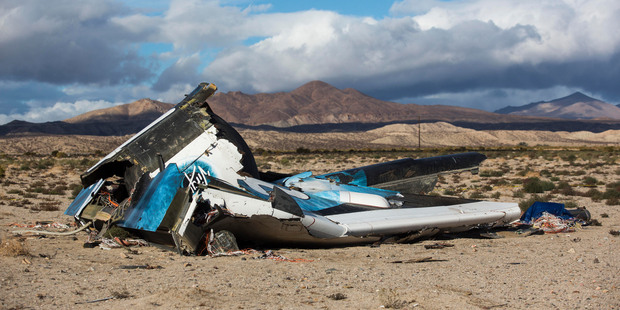
The space tourism company that suffered a tragic setback when its experimental rocket-powered spaceship broke apart over the California desert could resume test flights as early as the next Northern Hemisphere summer if it can finish building a replacement craft, says its chief executive.
The sleek composite shell and tail section of the new craft are sitting inside the company's manufacturing facility in Mojave, California.
After more than two years of work, it's beginning to look like a spaceship, but Virgin Galactic chief executive George Whitesides said there's much more to be done.
The ship -- dubbed SpaceShipTwo Serial No 2 -- will replace one that was destroyed last week after its feathering system that controls descent deployed prematurely and aerodynamic forces ripped it apart, killing the co-pilot and seriously injuring the pilot.
In the wake of the accident, workers have focused on building the new ship.
"That's provided some solace to all of us and I think there's sort of a therapeutic benefit to folks to be able to put their energies into constructive work," Whitesides said.
He said the company will be able to continue flying its mother ship -- the much larger jet-powered plane that launches the rocket ship at higher altitudes -- while federal investigators look into the cause of the deadly crash.
It is possible that test flights for the next spaceship could begin within six months, before the investigation is due to conclude, Whitesides said.
Virgin Galactic has an experimental permit from the FAA to test its spacecraft. Just last month, the company had received approval from the agency to resume rocket-powered flights.
The National Transportation Safety Board said there was nothing preventing Virgin from continuing to fly, but it wasn't immediately clear if the company would have to file another request with the FAA under its existing permit to start rocket-powered flights when the new ship is ready next year.
Speculation continues about how far the accident will push back the day when Virgin Galactic's paying customers can routinely rocket dozens of miles from a US$219 million ($284 million) spaceport in the New Mexico desert toward the edge of space for a fleeting feeling of weightlessness and a stunning view.
Whitesides said the accident has been tough on many levels, but he refused to see it as a roadblock and said the company did not have to start from scratch.
"There was no question it was a tragic setback, but it's one from which we can recover," he said.
"With Serial No 2, we'll be putting a stronger, even better ship into initial commercial service and I think we'll be able to get back into test flights soon and carry forward."
Virgin Galactic envisions flights with six passengers climbing more than 62 miles (100km) above Earth. Seats sell for US$250,000 and the company says it has booked passengers including Justin Bieber, Ashton Kutcher and Russell Brand. A few more passengers signed on this week, Whitesides said.
Virgin Galactic will be the anchor tenant at the taxpayer-financed Spaceport America in southern New Mexico.
Before the accident, the company planned to begin moving operations to New Mexico early next year.
Whitesides reiterated his commitment to New Mexico but acknowledged the company was still considering its new timeline.

No comments :
Post a Comment